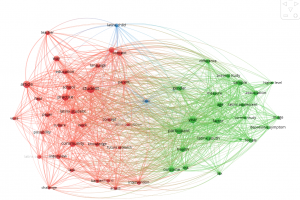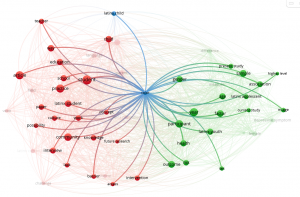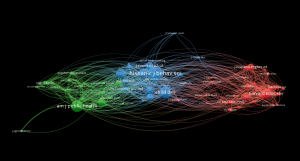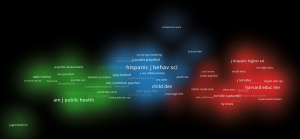The term I analyzed was Latinx, a gender-neutral neologism from the 21st century to refer to people of Latin American cultural or ethnic identity in the United States. 338 records with this term in the title were found in the Web of Knowledge. With this dataset, I created a couple of Networks. The first one showed the most common terms in the titles and abstracts of those articles:


I could not figure out what was the logic for the color-coding in this network. The only two terms in blue were color and Latinx child, while similar terms to the latter, such as Latinx adolescent and Latinx youth were in green. Words with connected meaning, including recent study, paper, or article, were in both the red and green sections. The most prominent term was student.
The second network was on co-citations:


Beyond the information on co-citation, this visualization allowed me to see more clearly what are the areas of study and journals were the term Latinx is being used. In this case, the color-coding was easier for me to interpret, showing three main fields of study: health, behavior, and education.
When searching in the Web of Science the term Latinx and art, only one result was found: Take two: Prescribing Latinx and medicine as aesthetic form. Searches in Woldcat.com or Pitt library were also not abundant. In my consideration of developing an art historical research that deals with the term Latinx, it would be useful to look at how other fields have previously approached or used it.